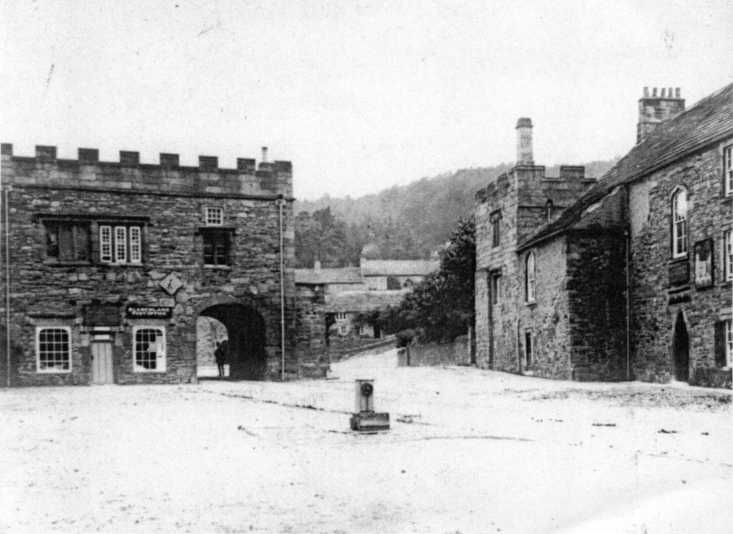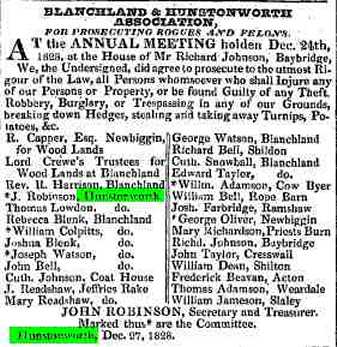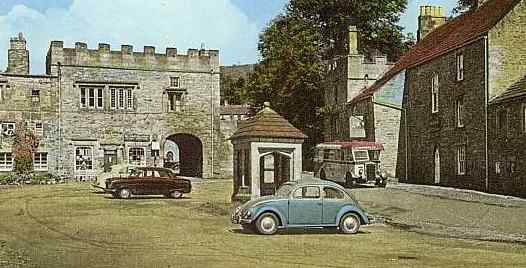Butter, bonny bits and Blackface sheep: the story of the Show
The Blanchland and Hunstanworth Show takes place on August Bank Holiday Monday and is a day for families to simply relax and have fun. But like many other country fairs across the North East, the Show has evolved from gatherings where livestock was bought and sold, and where hard-working communities had a rare chance to demonstrate their creative skills and have them recognised.
In its first year of publication in 1864, The Hexham Courant reported that Blanchland Floral and Horticultural Society had held its 22nd annual exhibition, making the inaugural show 1843. But it’s not quite that straightforward; two events were taking place that day. The report goes on to say: “The annual fair too was held” – it seems that the sheep fair took place separately – “an excellent show of lambs at the fair on the hill.”
There’s a much earlier reference to a sheep fair in Blanchland. A section of The Happy Village, a highly laboured 10-page eulogy in praise of Blanchland written by the Reverend Richard Wallis in 1802, shows that even in the early 19th Century, a sheep fair offering prizes was a firmly established event in the village calendar. Britain’s population was growing fast, and farmers were driven to meet ever-increasing demands for food by breeding hardier animals that could thrive in the harsh upland environment. There’s an indication of the sheer scale and regional importance of the fair at the time in a paragraph from the September 1805 issue of Bell’s Weekly Messenger: “At Blanchland Fair there was the best show of Sheep ever remembered, and nearly 7,000 were sold.”
Ask any competitor entering the Industrial Section classes: “It’s just a bit of fun”, they’ll say – but they’re deadly serious when they say it! Things weren’t much different 150 years ago if the story of the Butter Battle of 1864 is anything to go by. Mrs Morpeth of Shildon was the winner of the newly introduced Butter Section, the Courant said. It was a popular class with 15 entries, but there had been some “dissatisfaction” about the outcome; entrants were complaining because some entries had contained salt and some hadn’t. Clearly this was not the sort of thing you could just take with a pinch of salt!
From “A General History of Quadrupeds” – Ralph Beilby and Thomas Bewick…

HEATH RAM OF THE IMPROVED BREED.
The ram from which we took this drawing, in July, 1798, belonged to the Bishop of Durham. It obtained the premium given for the best Tup, shewn for that purpose, at Blanchland, on the southern border of Northumberland, in 1797. Exclusive of the symmetry of proportions, and beauty of its form, a more important object has been obtained in the quality of the wool. They are also as hardy as the unimproved breed, and can equally endure the severity of the cold and wet to which they are exposed on the bleak heaths which they are doomed to inhabit.
Blanchland and Hunstanworth Show 2009
The next year – 1865 – the great butter dispute appears to have been resolved, with the Best Pound of UNSALTED butter being won by Mrs Anderson of Hunter House.
That year the show also featured the “best collection of ores” and “collection of spar”. The lead mining industry was at its height, swelling the population of Blanchland and the surrounding villages with hundreds of miners and their families, and the Show reflected this with spectacular displays of miners’ “bonny bits” of purple, green and pink fluorspar crystals glittering in the sun.
Also in 1865, Hunstanworth held its own show for the first time – again perhaps in response to the huge numbers of incomers attracted by work at the lead mines. Reverend Capper’s ‘model village’ of lead miners’ cottages designed by nationally renowned architect Samuel Sanders Teulon was recently built, and a show would firmly establish the identity of this brand new community. In 1881 the Courant reports that Hunstanworth Show is held in the school room at Townfield, “a large and commodious building which is well adapted to such a purpose.”
But, because of the torrents of rain that poured throughout the day, the showgoers did not flock to hear Rookhope Brass Band play, and the Courant says that even “Old Aunt Sally” was prevented from turning up as usual, as the wet weather had landed her up with an attack of rheumatism. Bizarrely the Courant also reports that a framed picture of the Emperor of Russia’s new yacht Livadia went to Mrs J Down for the best loaf of white bread! We’ll never know what Mrs Down thought of her prize.
While Hunstanworth Show was formed around its incoming mining community, Blanchland Show’s roots were firmly in farming. In 1890 the Hexham Courant reported: “…though times have very materially changed by the establishment of auction marts and other facilities during the last quarter of a century, Blanchland Fair is still recognized as a remunerative market for the most extensive lamb rearers throughout the country.”
George Carr, born in Blanchland in 1850, describes the Show of his childhood in Bonnie Blanchland…
To-night the lads and lasses spend
The savings of the year,
On tools and stuffs to make and mend
On things to eat and wear.
But see those crowds now going past,
As rushing waters flow,
Until they stand in front at last
Of Tommy Elliott's Show.
See rows of peepholes near the ground
For little children small,
While higher other rows are found
For middle-sized and tall.
He thus with pictures one by one,
Showed England's glorious past,
And never was an eye withdrawn
Until he'd shown the last...
The roundabout and monkey show
Attract our wondering gaze;
And every sight as on we go
Doth fill us with amaze.
Here is if we should want to shoot
A Shooting Gallery Range;
A "Shuggy" Boat there is to boot
Will make us feel most strange.
And here is one doth purses sell,
With seeming silver filled,
For half-a-crown he will you tell
You may a fortune build.
They also held a Flower Show
Upon the self-same day,
Where to and fro a constant flow
Of fair folks wend their way.
Download the full, illustrated pdf version of Bonnie Blanchland on the Poets and Poetry page.
John Patterson checks his begonia blooms the night before the 2008 show
The year is 1911, and at the end of August thousands of Britains are dying in a heatwave with temperatures of up to 97 degrees. The Mona Lisa is stolen from the Louvre and 50,000 armed troops are called in to handle rioting strikers in Liverpool and London. The Show must go on however, and in 1911 Blanchland and Hunstanworth Floral Societies amalgamate and hold the first ever Floral and Agricultural Society Show for the two villages, presumably because the lead mines had gone and the workers they supported had moved on.
By amalgamating, the Blanchland and Hunstanworth Show was bigger and better than ever. A 1925 Courant report says: “This show is one that goes on improving. During the last few years it has become increasingly popular and has enlarged its scope… the Industrial section, a section that, due probably to the influence of the Women’s Institute is growing more and more popular at shows, was noteworthy for exhibits of workmanship and housewifely skill.”
Fourteen years later, as the dark clouds of war gather on the horizon (Robbs of Hexham advertises blackout material in the Hexham Courant) the 1939 Blanchland and Hunstanworth Floral and Industrial Society Show is drenched by a two hour thunderstorm: “lightening danced and thunder rolled” says the report. A few days later Britain declares war with Germany.
You can go to Blanchland and Hunstanworth Show’s website here.










